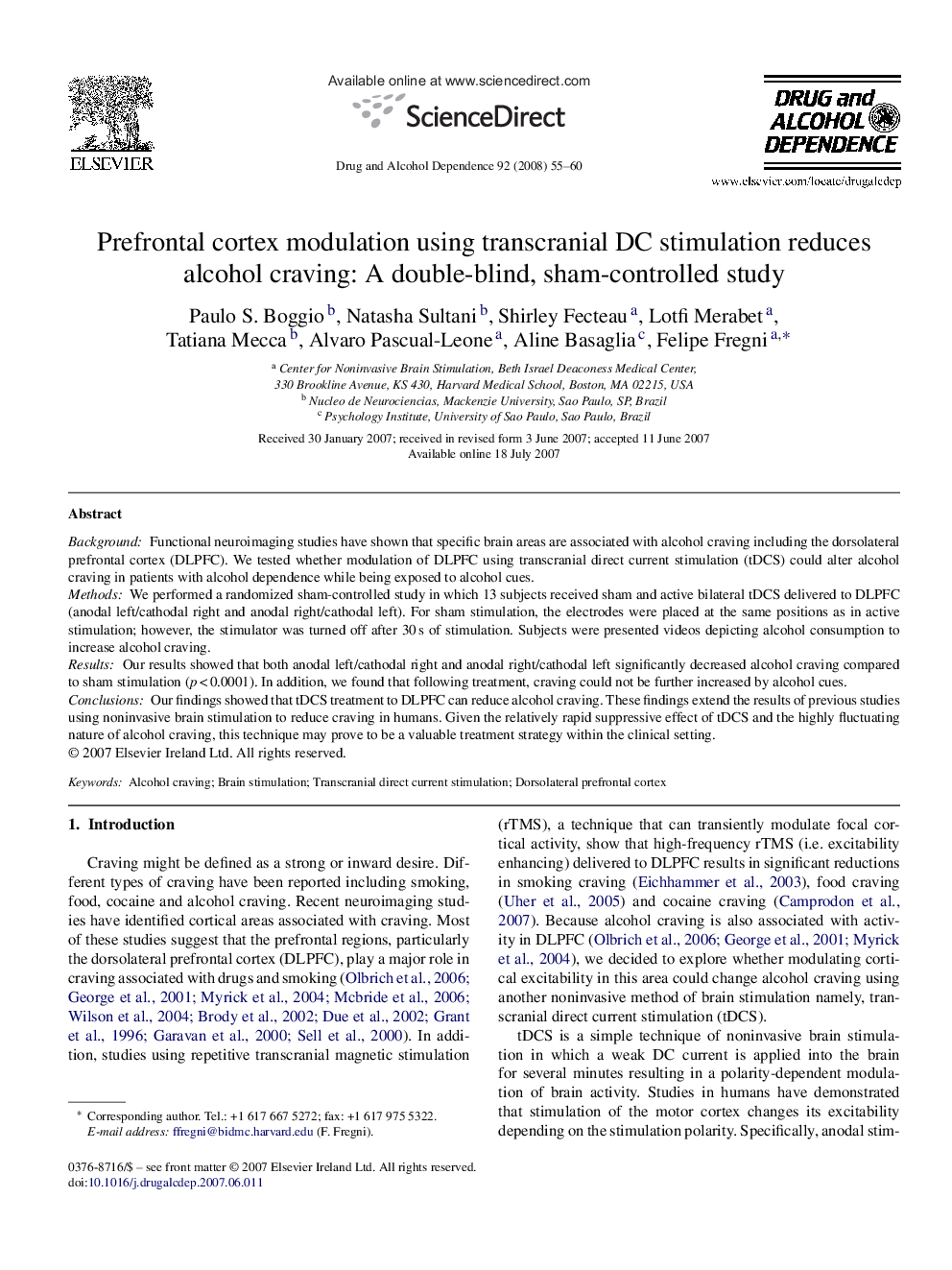| Article ID | Journal | Published Year | Pages | File Type |
|---|---|---|---|---|
| 1071647 | Drug and Alcohol Dependence | 2008 | 6 Pages |
BackgroundFunctional neuroimaging studies have shown that specific brain areas are associated with alcohol craving including the dorsolateral prefrontal cortex (DLPFC). We tested whether modulation of DLPFC using transcranial direct current stimulation (tDCS) could alter alcohol craving in patients with alcohol dependence while being exposed to alcohol cues.MethodsWe performed a randomized sham-controlled study in which 13 subjects received sham and active bilateral tDCS delivered to DLPFC (anodal left/cathodal right and anodal right/cathodal left). For sham stimulation, the electrodes were placed at the same positions as in active stimulation; however, the stimulator was turned off after 30 s of stimulation. Subjects were presented videos depicting alcohol consumption to increase alcohol craving.ResultsOur results showed that both anodal left/cathodal right and anodal right/cathodal left significantly decreased alcohol craving compared to sham stimulation (p < 0.0001). In addition, we found that following treatment, craving could not be further increased by alcohol cues.ConclusionsOur findings showed that tDCS treatment to DLPFC can reduce alcohol craving. These findings extend the results of previous studies using noninvasive brain stimulation to reduce craving in humans. Given the relatively rapid suppressive effect of tDCS and the highly fluctuating nature of alcohol craving, this technique may prove to be a valuable treatment strategy within the clinical setting.
